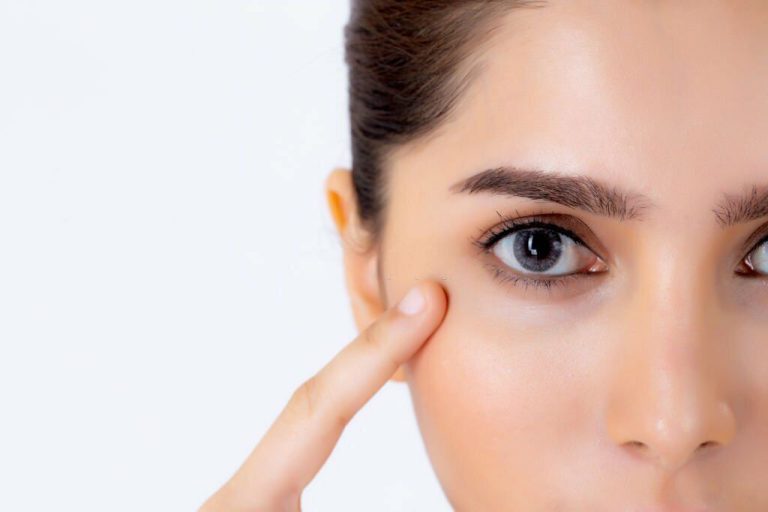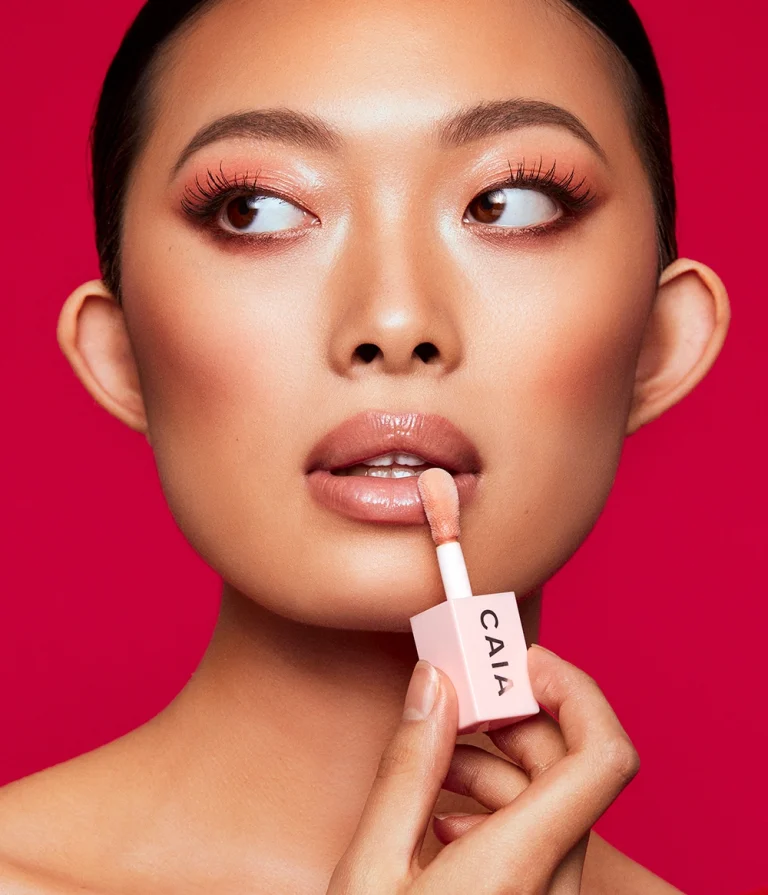Is Tea Tree Oil Good For Your Eyelashes?
Tea tree oil has become a popular natural remedy for various skin and hair care uses. With its anti-inflammatory, antimicrobial, and conditioning properties, some people have started using tea tree oil on their eyelashes in hopes of achieving longer, healthier lashes. But is tea tree oil actually beneficial and safe to use on your eyelashes?
In this article, I’ll provide a comprehensive overview of tea tree oil for eyelashes. We’ll cover the potential benefits, proper usage, risks to be aware of, and whether it’s ultimately worth adding to your lash care routine.
What is Tea Tree Oil?
Contents
Tea tree oil is a natural essential oil extracted from the leaves of the Melaleuca alternifolia tree, which is native to Australia. It has a fresh, herbal scent and a pale yellow color.
The oil derives from steam distillation of the leaves and contains over 100 beneficial plant compounds like terpenes, cineoles, and terpinen-4-ol. These compounds give tea tree oil its antibacterial, antifungal, antiviral, and anti-inflammatory properties.
In addition to these medicinal effects, tea tree oil also acts as a moisturizer. It contains fatty acids that help nourish and hydrate skin and hair.
Why Do People Use Tea Tree Oil for Eyelashes?
Over the years, beauty enthusiasts have started using tea tree oil on their lashes for several reasons:
- To moisturize and condition lashes
- To stimulate eyelash growth
- To treat eyelash mites or bacterial infections
- To reduce inflammation or irritation of the eyelids
The proposed benefits largely stem from tea tree oil’s antimicrobial and anti-inflammatory properties. Some also believe it can enhance blood circulation to stimulate growth.
By using tea tree oil, people aim to achieve longer, stronger, and healthier-looking eyelashes. But do these purported benefits really hold up? Let’s analyze the evidence behind using tea tree oil for common lash goals.
Potential Benefits of Tea Tree Oil for Eyelashes
Moisturizing and Conditioning
One of the main reasons people use oil on their lashes is to condition them. The lipids in oils can help moisturize dry, brittle lashes and make them look shinier and fuller.
As an essential oil, tea tree oil does contain nourishing fatty acids that can help condition eyelashes. The lauric, linoleic, and oleic acids may help moisturize lashes to prevent brittleness and breakage.
So if your lashes are dry and damaged, tea tree oil could potentially hydrate and strengthen them. But carrier oils like coconut oil, olive oil, or almond oil may provide even better conditioning effects.
Promoting Lash Growth
Many people are interested in natural products like oils to help enhance eyelash growth. There is limited evidence that tea tree oil might help stimulate follicle activity to prolong the growth phase of lashes.
Some speculate it improves blood circulation in the follicle area, providing more nutrients. However, no human studies exist demonstrating tea tree oil definitively extends the anagen (growth) phase.
Anecdotal evidence of lash growth effects exists. But it remains unproven whether tea tree oil can produce significant lash lengthening or thickening results for most people.
Treating Eyelash Mites
Tea tree oil is commonly used as a natural treatment for demodex eyelash mites. Demodex are microscopic mites that naturally live in hair follicles. They become problematic if populations swell, causing itching, inflammation, and other blepharitis symptoms.
The terpinen-4-ol compound makes tea tree oil an effective natural anti-parasitic. In vitro studies demonstrate it can kill demodex mites at relatively low concentrations.
Human trials also found tea tree oil solutions reduced demodex counts and associated inflammation. So evidence supports using diluted tea tree oil to manage eyelash mites.
Reducing Inflammation and Irritation
Blepharitis is a common inflammatory eyelid condition causing irritation, redness, and greasy scales along the lash line. Demodex mites often aggravate blepharitis. The anti-inflammatory effects of tea tree oil may help soothe blepharitis symptoms.
In clinical blepharitis trials, tea tree oil treatment reduced lid inflammation and other clinical signs. These anti-inflammatory properties could also soothe general eyelid irritation related to makeup, environmental factors, or other sensitivities.
Through calming inflammation, tea tree oil may promote healthier lash follicles less prone to breakage and loss.
Fighting Bacteria
Tea tree oil contains antimicrobial components like terpinen-4-ol that fight common bacteria like staphylococcus aureus. Bacterial buildup along lash follicles can cause infections like styes.
Evidence shows diluted tea tree oil inhibits growth of various bacteria at low concentrations. This suggests it could potentially help prevent bacterial overgrowth around eyelashes when used in proper dilutions.
However, tea tree oil is not a proven standalone treatment for styes or other established infections – medical treatment is still required. But some findings indicate it could have preventative antimicrobial benefits with regular use.

How to Use Tea Tree Oil for Eyelashes
If you want to test out using tea tree oil for your eyelashes, here are some tips for safe and effective application:
Dilute with a Carrier Oil
Tea tree oil should always be diluted with a carrier oil before applying to skin or lashes. Recommended dilutions range from 1-5% tea tree oil in a carrier oil.
Suitable carrier oil options include coconut, olive, jojoba, or almond oils. This helps prevent irritation and sensitivity reactions.
You can make your own premixed oil blends. Or purchase ready-made eyelash serums containing diluted tea tree oil.
Use Proper Application Tools
Avoid applying tea tree oil to lashes with your fingers, as this can transfer oil into your eyes. Use disposable spoolies, clean mascara wands, Q-tips, or small eyeliner brushes instead.
This allows precise, controlled application along your upper and lower lash lines. Carefully apply to lash roots but avoid direct contact with your eyes or waterlines.
Follow Proper Usage Frequency
How often you apply tea tree oil depends on your purpose and tolerance. For conditioning or promoting growth, a few times per week is likely sufficient.
If treating an active eyelash or eyelid issue like mites or inflammation, daily use for a few weeks may be warranted.
But take occasional breaks to prevent possible irritation from overuse. Gauge your skin’s response and adjust frequency accordingly.
Are There Risks or Side Effects?
Despite potential benefits, tea tree oil does carry some cautions:
Irritation and Allergic Reactions
Undiluted tea tree oil can cause skin and eye irritation. Allergic reactions are also possible in those with sensitivities.
Always patch test diluted tea tree oil on your arm for a few days first. Discontinue use if any rashes, redness, or reactions develop.
Signs of eye/lash sensitivity can include stinging, burning, itching, redness, and swelling. Rinse immediately if this occurs.
Avoiding Eye Contact
Getting tea tree oil in your eyes can be dangerous. Ocular exposure can damage the cornea and impair vision.
That’s why properly diluting and carefully applying tea tree oil along just the lash lines is crucial. Avoid waterline or lid margins.
Rinse eyes with water if accidental contact occurs and symptoms develop. Seek medical attention for significant reactions.
Other Warnings
Do not ingest tea tree oil, as it can cause serious side effects if swallowed. Those pregnant or breastfeeding should avoid use due to lack of safety data.
Tea tree oil may also interact with certain medications like anticoagulants, antibiotics, and hormones.
Always consult your doctor before using if you have underlying medical conditions or take any medications. Carefully research contraindications.
The Verdict: Should You Use Tea Tree Oil on Eyelashes?
When used correctly, tea tree oil could offer some benefits for eyelash health and appearance. The strongest evidence supports its use for reducing mites and inflammation related to blepharitis. There’s moderate backing for conditioning and antimicrobial effects.
However, tea tree oil is not a definitive solution for achieving longer, thicker lashes. The lash growth effects are uncertain and likely minimal for most. Other ingredients like peptides or prostaglandins seem more effective for boosting growth.
The biggest caveat is tea tree oil must be diluted and applied carefully to avoid irritation issues. Improper use around the eyes can be dangerous.
Overall, tea tree oil is likely safe and potentially beneficial for eyelashes if used properly. But the risks and limitations should be carefully weighed. Proceed with caution and stop use if any adverse reactions occur. Speak with your doctor if you have concerns about using tea tree oil near your eyes.
With the right dilution and application approach, adding tea tree oil to your regular eyelash hygiene routine could support overall lash health. But don’t expect dramatic lengthening or thickening results. Focus on managing defined issues like mites or inflammation and take necessary precautions when using any oil around the delicate eye area.
Conclusion
Tea tree oil is an essential oil with antimicrobial and anti-inflammatory properties that may benefit eyelashes.
It could potentially help condition lashes, treat mites and bacteria, reduce inflammation, and slightly stimulate growth. But dramatic lengthening is unproven.
Always dilute tea tree oil properly with a carrier oil before applying along the lash line with a clean spoolie or brush.
Use tea tree oil carefully and sparingly around eyes. Discontinue immediately if irritation or reactions occur.
Speak with your doctor before using if pregnant, breastfeeding, or have medical conditions.
While tea tree oil is not a lash-lengthening miracle, it could be a helpful supplemental addition to your eyelash hygiene routine when used prudently. But make sure to take necessary precautions and don’t expect dramatic results. Listen to your body and adjust usage according to your own tolerance.

Founded by Sophia Rodriguez, IGXO Cosmetics is a PETA-certified, cruelty-free, and vegan makeup brand.





